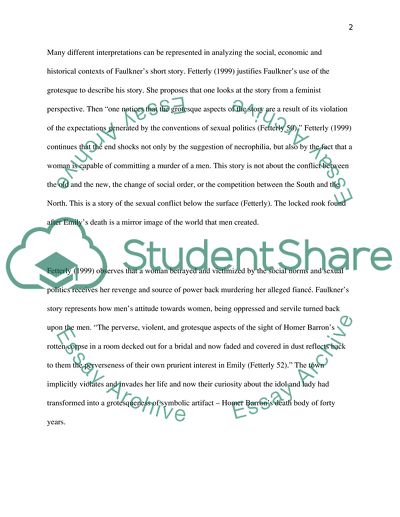Cite this document
(Analysis of A Rose for Emily Short Story by William Faulkner Essay Example | Topics and Well Written Essays - 1500 words, n.d.)
Analysis of A Rose for Emily Short Story by William Faulkner Essay Example | Topics and Well Written Essays - 1500 words. https://studentshare.org/literature/1563446-a-rose-for-emily-research-paper
Analysis of A Rose for Emily Short Story by William Faulkner Essay Example | Topics and Well Written Essays - 1500 words. https://studentshare.org/literature/1563446-a-rose-for-emily-research-paper
(Analysis of A Rose for Emily Short Story by William Faulkner Essay Example | Topics and Well Written Essays - 1500 Words)
Analysis of A Rose for Emily Short Story by William Faulkner Essay Example | Topics and Well Written Essays - 1500 Words. https://studentshare.org/literature/1563446-a-rose-for-emily-research-paper.
Analysis of A Rose for Emily Short Story by William Faulkner Essay Example | Topics and Well Written Essays - 1500 Words. https://studentshare.org/literature/1563446-a-rose-for-emily-research-paper.
“Analysis of A Rose for Emily Short Story by William Faulkner Essay Example | Topics and Well Written Essays - 1500 Words”. https://studentshare.org/literature/1563446-a-rose-for-emily-research-paper.


